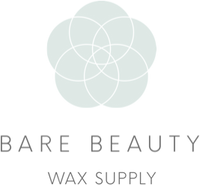As a professional, the last thing you want is to hurt your client. Damaging the skin isn’t just embarrassing to you and painful for your customer. It also puts your reputation and potential clientele at risk.
After all, your clients trust you to perform safe and effective epilation treatments, so it’s essential to prevent skin lifting from waxing. In this guide, we’ll discuss the causes of skin lifting during waxing and how you can prevent it in your practice.
What can cause skin lifting during waxing?

Skin lifting, also called wax burn, occurs when wax adheres too strongly to the skin and removes the outermost layer. Lifting can leave behind heavily irritated skin, raw spots, and scabs. In some cases, it may cause permanent scarring and discoloration.
This type of injury is most often seen with eyebrow waxing, but it can happen on any part of the body, including the upper lip, underarms, legs, chest, back, and intimate areas. Here are some of the leading causes of skin lifting from waxing:
Not knowing your client’s skin type
Thin, dry, sunburned, or sensitive skin is more likely to lift from waxing.
So, it’s essential to be able to identify a weakened or compromised moisture barrier and make the necessary adjustments for safe treatment. We stress the importance of a consultation as part of your regular waxing routine so that you have a firm understanding of your client’s skin.
Knowing if the area is dry and flaky, or tough and calloused, can make a difference in the materials you use during your session. Speaking with your client will help you determine if they’re on any specific medications or using topical treatments, such as retinol, that cause skin to become sensitive and fragile.
Applying wax that’s too hot
Before applying wax to your client’s skin, it’s essential to know exactly what you’re using and the ideal temperature of your product. Both soft and hard waxes can cause clients to experience a nasty wax burn if applied at too high a temperature.
Additionally, we often see examples of ripped skin when lower-quality waxes are used. These products may contain additional additives and adhere to the skin differently than you would typically expect from a high-quality wax.
Improper waxing technique
For many clients, exfoliation is a major perk of soft wax. When used correctly, it evens out bumps and rough texture for smoother skin and long-lasting results. However, too much of a good thing is a recipe for disaster.
Applying soft wax to the same treatment area more than once can result in skin lifting, as well as long-term discoloration of the affected area. Even if you stick to a single application, failing to hold the skin taut or pull the wax parallel to the skin can generate the same results.
Related: Folliculitis After Waxing: Causes, Treatments, and Prevention
Preventative tips to keep your clients happy and their skin safe
Knowing what to look out for means you can plan ahead and maintain the integrity of your client's skin. But not all red flags are readily apparent from a superficial examination. Here are our expert tips to avoid the risk of skin lifting from waxing:
Know how to identify areas of concern when you see them
For clients of all ages, but primarily those with mature skin, examine the treatment area for varicose veins, circulation issues, discoloration, and excessively dry skin, which may indicate the need for a wax suitable for sensitive, delicate skin. If you notice anything unusual, discuss it with your client and outline their options and potential risks so they can make informed decisions.
Find out if your client uses a retinol or retinoid
Using a retinoid can help your clients maintain youthful, vibrant skin, but it also increases the risk of adverse effects from waxing, including skin lifting. Since you can't visually detect if a client is using skincare products with vitamin A, it’s essential to discuss this with them.
While prescription retinoids like tretinoin are usually easy to identify, many over-the-counter anti-aging serums also contain retinol, though they may be harder to detect. Retinoids are generally applied to the face, so the most common areas of concern are the eyebrows during a brow wax, or around the lips and cheeks during a facial wax.
Have varying waxes available for clients with sensitive skin
You wouldn’t shave without shaving cream, so why would you attempt to wax a client with the wrong product? It’s important to exercise inclusivity by stocking your business with products suitable for all clients.
After all, getting an intimate wax with sensitive skin can feel irritating enough as it is. There’s no reason to amplify that feeling by being ill-prepared and leaving your client with a Brazilian wax burn.
In addition to skin lifting, clients with reactive skin may be more susceptible to pimples, ingrown hairs, and folliculitis after waxing. Keep a pre-wax oil and soothing post-wax emulsion on hand to ensure the most comfortable experience.
Read more: Tips to Wax Sensitive Skin
Connect with high-quality waxing ingredients at Bare Beauty Wax Supply
Clients with sensitive skin don’t have to resort to daily shaving to maintain smooth, hair-free skin. They just need a waxing specialist with the right technique and the best products! At Bare Beauty Wax Supply, it’s our mission to provide you with affordable supplies that never compromise on quality.
We have all the waxing tools and products you need to succeed. Visit our online store today to fully stock your business with the industry's best brands, trusted by estheticians nationwide!

